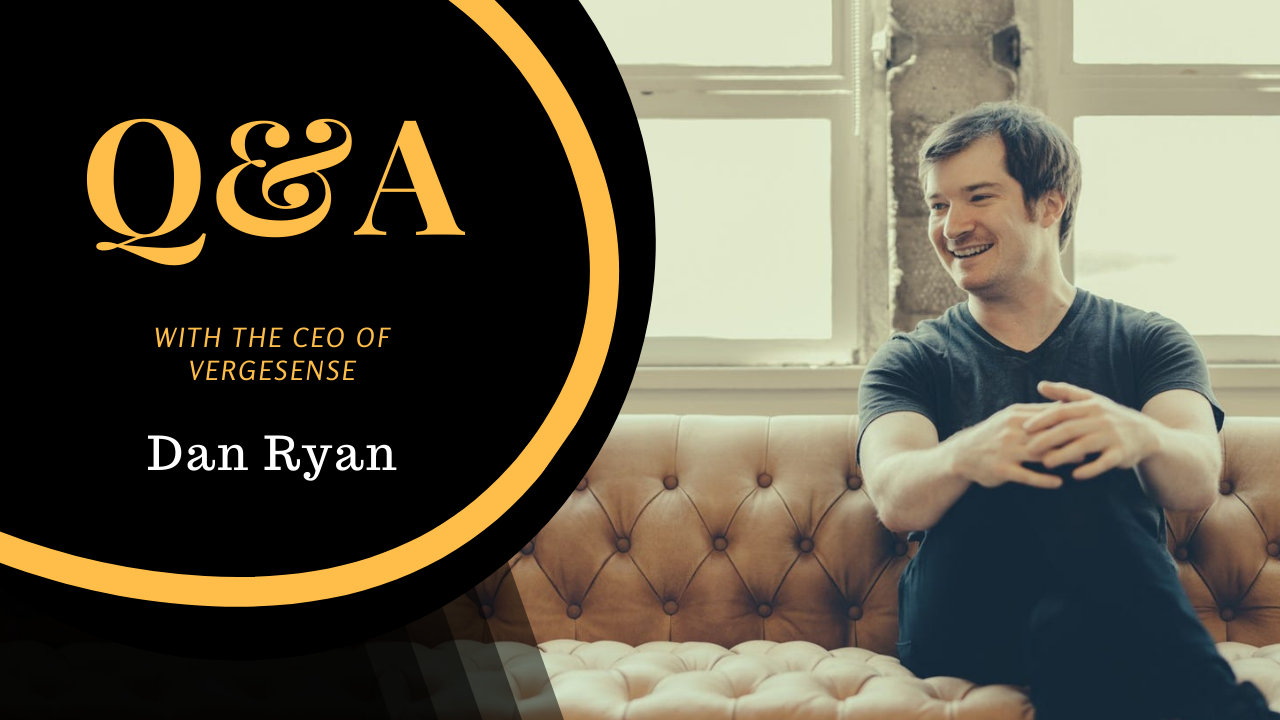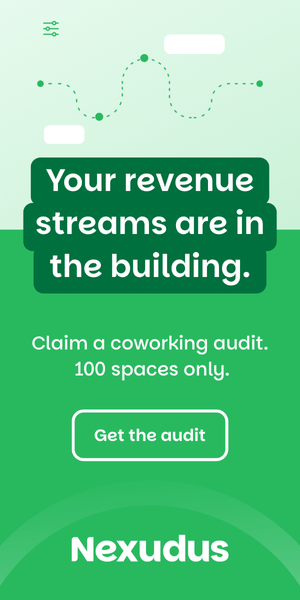- VergeSense has seen an ‘exponential rise’ in demand for its workplace sensors.
- Its sensors can now detect occupancy based on where you put your coat or laptop.
- The resultant smart leasing data has saved some companies millions of dollars.
Occupancy sensors are rapidly becoming a staple workplace technology. These tiny sensors are capable of collecting massive amounts of data about your workspace. If you can harness this data correctly, you can optimise your workspace within an inch of its life and reap the rewards of maximised occupancy rates.
That’s not all. Occupancy sensors can also tell your cleaning staff when to clean and where. In light of the pandemic, this not only reduces transmission rates of a host of bugs but can also build member confidence in your workspace cleanliness.
We spoke to Dan Ryan, co-founder and CEO of VergeSense, about the company’s AI-powered sensors for the workplace and the future of work.
Dan is a seasoned entrepreneur with a passion for disrupting the intersection of the physical and digital worlds. Previously, Dan was vice president of product at Acuity Brands Lighting, where he built and helped launch Acuity’s IoT Division (Atrius) following its acquisition of his company ByteLight. He originally founded ByteLight, an LED-based indoor positioning system, in 2011. Now, it’s a standard offering across almost every lighting OEM. As one of the inventors of visible light communication, Dan also has a total of 19 patents to his name.
Allwork.Space: You’ve had a highly successful career as an entrepreneur in the tech industry, why are you now turning your attention to sensors? And, in particular, why the emphasis on workplace sensors?
Dan Ryan: I have a passion for developing innovations that bridge the physical and digital worlds. The first company I founded was ByteLight, an early pioneer in developing sub-meter accuracy indoor location services for retailers. After selling ByteLight to Acuity Brands in 2015, I worked within their company for a few years. I then scratched the entrepreneurial itch again by hatching VergeSense within Y Combinator in May 2017.
Launching VergeSense was based on the same desire to connect the physical and digital worlds — this time in the workplace. By collecting accurate, scalable data on how employees are using the workplace, we enable companies to reimagine their physical workplaces and create spaces where people can truly thrive.
Allwork.Space: There are a handful of workplace sensor technologies now available. What makes yours stand out from the competition?
We’re the world’s leading occupancy data provider for the workplace, but I think at a more granular level, there are key differentiators that set us apart from other sensors.
The type of data that we capture is the most accurate that’s out there, and it’s 100% anonymous. We’re also enterprise-ready. More than 40 Fortune 1000 customers across 250 office buildings and 18 countries rely on VergeSense data to power agile workplace design, better employee health and productivity, and reimagine flexible workspaces.
VergeSense is also unique with our people-counting sensor because we work across all types of spaces, which means we can cover the entire floor, including within conference rooms and open areas. And we do this with both a wired and wireless option. For instance, our wired sensor is excellent for newer builds, while our wireless sensor is ideal for existing buildings. Finally, our ease of deployment also separates us from the crowd. Our wireless sensor installs in seconds with magnetic mounting.
Allwork.Space: One aspect I’d like to better understand is the AI functionality – how does this work?
Our sensors gather data through a very low-resolution lens that captures an array of pixels. AI algorithms process and analyze this data locally to understand if a person occupies a workspace.
In our newly launched wireless sensor, we’ve actually expanded on these deep learning capabilities to understand what we call passive occupancy. For the first time, we can understand when a workspace is being used solely by identifying work-related items such as a coat on a chair or a laptop on a desk, increasing the accuracy of our occupancy data.
Allwork.Space: What benefits would your sensor technology bring to a coworking space manager? How would they use it?
Coworking managers share a lot of the same concerns our corporate real estate clients share. They both want to understand how people are using their workplaces. Today, as we’re all redefining the purpose of the office, we’re looking for a way to re-design and evolve offices so that they support more flexible, distributed working. VergeSense helps them do this by capturing which types of areas are being used most frequently.
For example, one of our clients, a multinational energy company, deployed the VergeSense solution to systematically capture and analyze information about how people typically use phone booths, conference rooms, etc. They used this information to understand how employees responded to design and layout changes. Then, they applied these learnings to buildings around the world. There’s a reason why when you look at WeWork, most of their spaces look the same. They followed a similar methodology to design offices optimised for their occupants.
Allwork.Space: You also mention “smart cleaning” on your company website – how does this work? And could it help encourage people back in the wake of COVID-19?
Earlier this year, in response to the COVID-19 pandemic, we deployed our Restore solution to help workplace leaders make data-driven adjustments to their return to work plans. It features a Smart Cleaning planner to access a real-time floor map of the most frequently used spaces. Companies can utilize the data to generate cleaning plans or sync this information to their IWMS (Integrated Workplace Management Systems) to appropriately manage cleaning efforts.
Allwork.Space: Talking of COVID-19, budgets are now stretched for many businesses, particularly coworking spaces – why should a workspace manager invest in your technology? What sort of ROI could they get?
We help workspace managers, and their companies get the most value out of their existing workspaces. Real estate is one of the biggest investments for companies, typically the highest cost after payroll. So, there’s an increased incentive to ensure that offices deliver value and optimise to meet employee needs and behaviours. The data we provide to our customers takes the guesswork out of the design process. This is especially important in today’s climate as companies move to agile workplaces, and their needs change day-to-day.
We also help businesses make smart leasing decisions. Making uninformed space reductions or additions can have seriously negative consequences. We had a customer save millions of dollars by verifying that one building in their portfolio was only 20% utilized. They were able to move away from renewing that lease confidently.
Allwork.Space: The pandemic has also massively accelerated digitisation across multiple industries. How has it affected your business? Have you seen an influx in demand for sensor tech?
Companies have definitely accelerated their digitalisation plans to keep pace with what the future of work will look like, which is more agile, distributed, and digital. Consequently, we’ve seen an exponential increase in demand for technology like ours because we can help companies with their initial return-to-work strategies and reimagine their agile workspaces going forward.
Allwork.Space: As with many other industries, workspace managers must achieve a balance between data privacy, security and accessibility. How does VergeSense help them achieve this balance?
Our clients include global Fortune 1000 companies with stringent privacy and security policies, so we completely understand what it takes to find that balance. VergeSense places data privacy at the centre of all our technology, business, and design decisions. We’re committed to delivering the most accurate anonymous data possible, from our anonymous-at-the-source design to encrypted data transfer and storage throughout the entire data transfer lifecycle.
Our patented computer vision model is uniquely capable of processing ultra-low resolution imagery. No personally identifiable information is ever captured. We process and destroy data on devices and adhere to the industry’s highest Infosec standards. We’ve earned the trust of data security leaders to safeguard their data throughout its entire lifecycle.
Allwork.Space: Finally, how do you see the workplace sensor market developing over the next few years? How do you expect both this technology and public opinion about this technology to change?
The workplace is changing rapidly, so the way workplace professionals use sensors in their buildings will undoubtedly change too. The pandemic has prompted leadership teams to discuss the physical workplace’s purpose and their companies’ long-term workplace strategy.
Many forward-thinking enterprises are using this opportunity to proactively transform and modernise their workplaces to be more flexible and distributed. Questions like “How many conference rooms are being used?” and “What technology do we need to roll-out for unassigned seating and on-demand desk booking?” are being elevated to boardroom conversations.


 Dr. Gleb Tsipursky – The Office Whisperer
Dr. Gleb Tsipursky – The Office Whisperer Nirit Cohen – WorkFutures
Nirit Cohen – WorkFutures Angela Howard – Culture Expert
Angela Howard – Culture Expert Drew Jones – Design & Innovation
Drew Jones – Design & Innovation Jonathan Price – CRE & Flex Expert
Jonathan Price – CRE & Flex Expert














